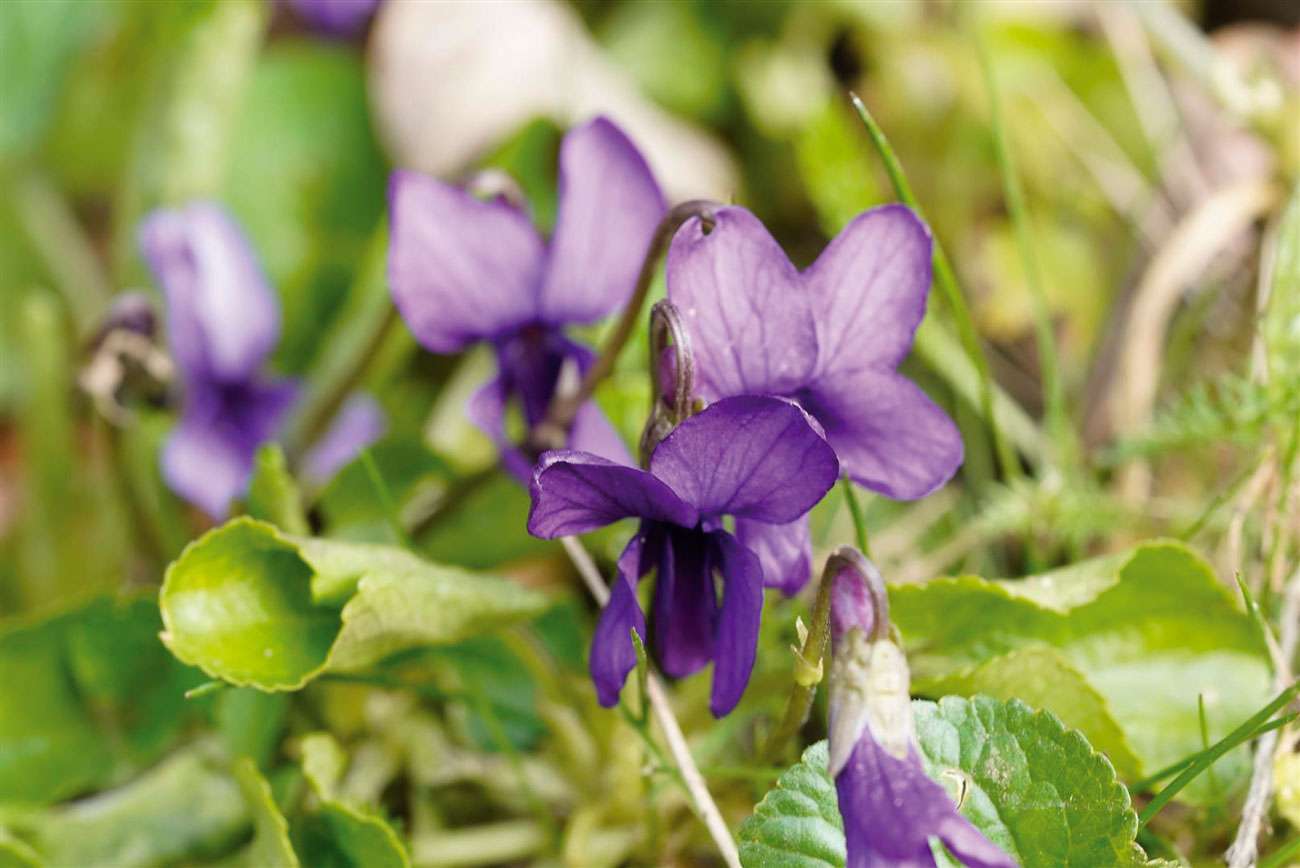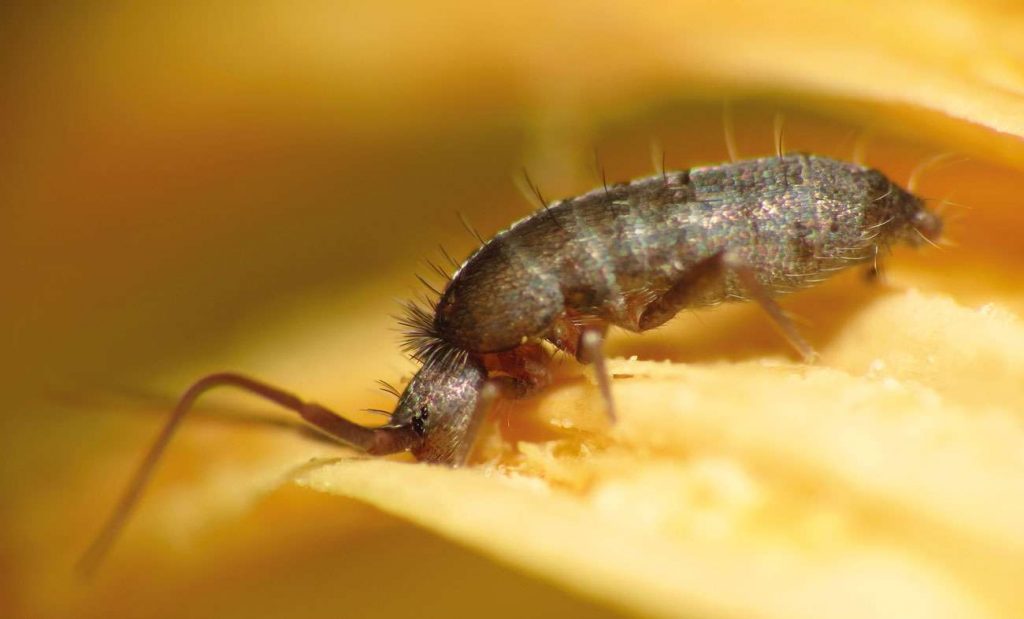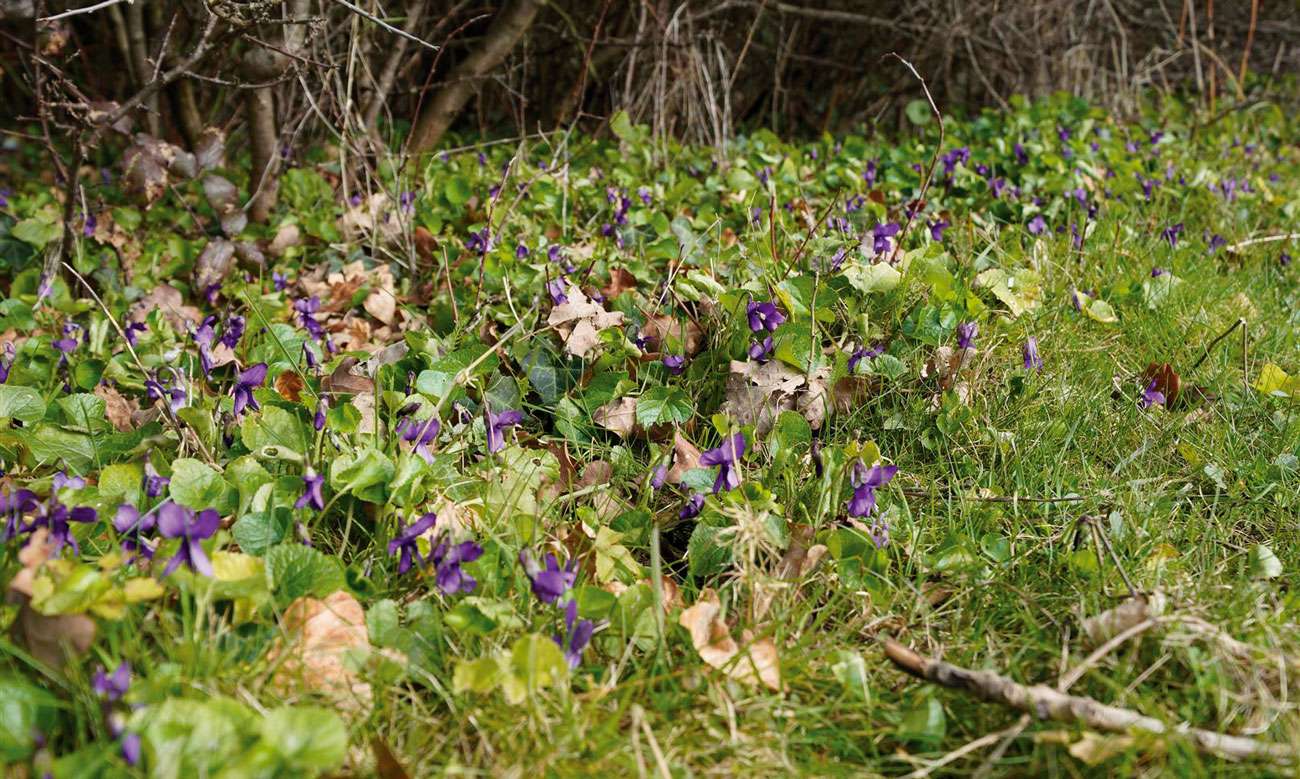
Violets at Snoxhall, Cranleigh. © Photo by Mark Matthews
We hear a lot about ‘immersing’ ourselves in nature, noticing the sights and sounds of spring. But what about the smells? We say ‘spring is in the air’ and lift our heads and sniff the delicious fresh scent of a world warming and returning to life.
Last year a group of scientists from the UK, Sweden and Hungary decided to do some research. They concluded that it was a biological process beneath our feet which made us recognise when spring had arrived. They linked the scent of spring with a 450 million-year-old cycle between bacteria called Streptomyces and little grubs called springtails.
To attract the grubs, the bacteria release a chemical called geosmin, which contains that earthy scent. Theirs is a close symbiotic relationship – and although the springtails eat the bacteria, they get covered in their spores, and help it reproduce and spread.

A Springtail
Streptomyces are of great benefit to us, as these soil bacteria are one of our most important sources of antibiotics. On the other hand – as so often in nature – all is not rosy with this picture! This bacteria, it is now known, acts as a ‘door opener’ to pathogenic fungi which attack rose roots. That is why gardeners and nursery men have traditionally not planted new roses in soil where old roses have sickened and have died – known as ‘rose replant disease’.
I saw a little leaping creature in my garden recently and was delighted to identify it as a springtail. I had been totally unaware of this creature until now. My excuse is that they are really very small – at most 4mm in length. Pale brown or grey with obvious antennae, and found in damp places under dead leaves, logs or stones. Their name derives from their ability, using their prong-like tail, to jump considerable distances. Along with two other similar little creatures known as bristletails, and the indoor silverfish – these insects resemble the primitive ancestors from which they have descended.
On a warm sunny day recently I walked by the side of an old hedge on Snoxhall and could smell violets. Looking down, there were several dark blue patches of the flowers, shrinking modestly, as befits a violet. It is actually their scent which is fugitive. These were viola odorata, or sweet violets, which are quite common in the UK. There are 9 species of violas, which include pansies, but this is the only scented one. It was the flower of Aphrodite – and therefore, of love. The oil from its petals is distilled and still used to make scent, toiletries and flavourings. Even a very sweet liqueur called parfait amour.

Violets (viola odorata) at Snoxhall, Cranleigh. © Mark Matthews
It was used in years gone by to conceal the smell of damp – and the flowers were strewn on floors of cottages and churches. The flowers produce a substance called ionine which quickly dulls the sense of smell, so not only do the undesirable smells disappear, the scent of violets does also. This can be proved by sniffing the flower until the scent is lost – and then holding it away for some moments, and then repeat the sniffing. The scent will return until the ionine does its job again. Doing this experiment, I also noticed that there were two layers of scent; the first one which was sweet and beguiling, and a second underlying one, sadly smelt of cat pee. Then the ionine kicked in again. This seems very strange; Nature always has a purpose, but I have no idea what it could be.
Beryl Harvey Fields is Cranleigh’s nature conservation site. We need volunteers. For further information: visit our conservation site in Cranleigh – or better, volunteer. Contact Philip Townsend at: for details.











